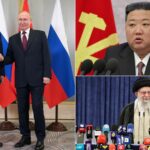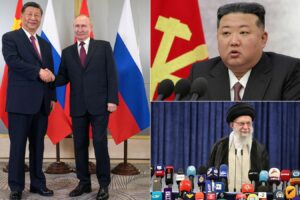A few weeks back, the US shot down a Chinese “balloon” that was hovering over its territory. The US claimed that it could be a “spy balloon” equipped with high tech surveillance systems used for intelligence gathering. China contended, “it’s a civilian air ship used for meteorological research, but accidentally entered the US air space by being deviated far from planned course”.
Meanwhile, Secretary of State Antony Blinken postponed a pre-scheduled visit to Beijing following a “political uproar” in Washington in the wake of the incident. The balloon incident has certainly ignited a dispute and damaged the US-China relations to some degree. The incident does not seem to have posed a serious national security and intelligence risk thus far, but further escalation may even cause a ‘war’—hot or cold—between the two countries.
The US-China relations have definitely worsened since 2020, mainly after China adopted a “tit for tat” retaliation, by ordering the US to close its consulate in Chengdu, in response to the American closure of the Chinese consulate in Houston (Texas) in 2020 on the charge of spying and intellectual property theft from that consulate.
In 2019, the US imposed a ban on the import of Chinese telecommunication equipment produced by Huawei Technologies and ZTE, citing a threat to national security and also debarred the export of tech or software products, including AI chips, to China in 2022. This “tech power game” exhibited tech imperialism, inviting a “Digital Cold War” between the US and China.
The ongoing Russia-Ukraine war has drawn the attention of the global intelligence community and this war is more likely to escalate further, with the US and Germany recently announcing their commitment to supporting Ukraine by sending dozens of the world’s most advanced battle tanks. While Russia has blamed NATO for seeking direct involvement in the war, the US blamed Russia for obtaining drones and high-tech missiles from its allies, including Iran.
Russia is destroying Ukraine, though the latter has received massive tech and arms assistance from the US and its allies. North Korea, under ‘tech propaganda’, is constantly testing and parading multiple modern missiles and challenging the tech superpower—the US. Pakistan is sporadically challenging another tech power India in the guise of AI technology, drones and nuclear weapons.
The geodigital situation of Nepal is equally vulnerable as the geopolitical situation is, given a high high possibility of cyber-battle between the two populous and giant economic rivals—China and India. The tech battle between tech superpowers—the US and China—has already swayed the geopolitics of technology.
The geo-tech interests of superpowers, “democratization of technology” as well as various transnational issues—terrorism, war, crime, cyber security, nuclear and AI threats—are creating crucial challenges to national security and sovereignty.
For tech superpowers, AI and nano-technology have become powerful means in defining state capabilities. For them, AI has become a key tool for national security. Technology has been playing a significant role in the state of affairs since the 1980s. Post the September-11 attacks, AI and foreign policy have become complementary to each other. AI is having a deep influence on foreign policy, while foreign policy is adding inducement to the development and (mis)use of AI technology.
The AI, on the one hand, is undermining global peace and security, and weaponizing data. On the other, AI and foreign policy, which have an intertwined relationship, are (re)balancing the clout between tech powers, and helping to shape “global power dynamics”, tech tyranny, digital dictatorship and data colonialism.
With the tech and digital revolution, “modern day bipolarity” is progressing toward “tech bipolarity” between the US and China. The US-China rivalry today is largely centered on digital space, AI and tech supremacy. If this tech battle continues for a long time and wreaks restrictions on each other’s tech diligence, India, perhaps, will start gradually dominating global tech and AI.
The three powers—the US, China and India—are focusing on “techno-economic competition”, besides traditional rivalry. China is aiming to become a global tech leader, while the US is focused on ‘countering’ or ‘containing’ China. India is strategic enough to benefit from tech bipolarity and geopolitics of technology, while it has made significant achievements in tech and intelligence and is aiming to become a part of possible “tech tri-polarity”.
Seemingly, India can play a mediating role between Russia and the West to bring peace in Ukraine as India is close to Russia, enjoys significant economic partnership with China, and has been maintaining strategic relations with the US. India’s role on the “Taiwan issue” will, most probably, determine whether the country is pragmatic enough to (re)shape the changing dynamics of global geopolitics and take advantage of geo-economy and geopolitics of technology.
Despite intensifying geo-political friction between the US and China, the two countries have had deep economic ties in the 40-plus years of their diplomatic relations. The two most responsible great powers, however, should envisage a larger landscape and ‘set the seal’ on diplomatic relations with “amity of greatness”, more so after the puncturing of the Chinese “balloon”.
Instead of upending geopolitics of technology, the tech powers should center on “navigating democratic and rational technological future” through multilateral diplomacy (tech and digital) and tech foreign policy, whereby they could leverage from tech cooperation, digital markets, digital and cyber intelligence, tech sovereignty (digital, data and cyber), AI regulation and ethics, global data protection and tech order.
Since “politics and geo-politics alike are the art of relationship”, it would be wise for them to “leave something concrete on the table” and resolve the blistering issues—diplomatic, tech and trade. For this, there has to be ‘passion’ for peace and prosperity, and ‘greed’ for goodwill and global harmony. Washington and Beijing need to be fortified with sensitivity, conviction, rationality, intelligence and ability to pursue each other.
They have to meet, sit, face, dine, communicate and embrace a common strategic and transparent framework as Churchill once said: “If I could dine with Stalin once a week, there would be no trouble at all. We get on like a house on fire”.
Essentially, none of the powers can leverage by making other powers terrified and miraculous. If the tech powers do not use intelligence and rationality under the sway of AI and tech supremacy, only ‘madness’ will prevail and ‘human intelligence’ will be in vain.
The fate and future that can be caused by the misuse of AI and nuclear technology can be so terrible, painful and miserable that there will neither remain human civilization nor mastery of AI technology, or irrational tech supremacy.
Source: TAPE















